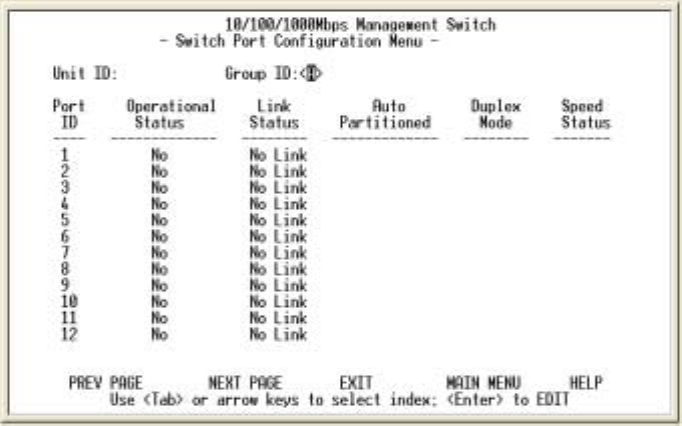
19
choice (according to IEEE 802.1p) to the four priority levels
provided.
•There are three different mode of VLAN supported in this system –
802.1Q, Port Base VLAN, MTU/MDU. The choice you made here
will ultimately decide the VLAN mode and function for entire system
(the configuration of the other two VLAN mode will have no effect to
the system behavior).
3.2. Switch Port Configuration
Figure 3-17. The Switch Port Configuration menu
The Ports (24+2) of the system are divided and displayed in three
separated pages. Use PREV PAGE, NEXT PAGE to list desired
port range and select the port with navigation key.
In the port configuration screen (display in next page) you can
configure the common characteristics such as speed negotiation,
flow control, and VLAN ID as well as the following special features
provided with the system:
• Per-Port Priority – Four levels of priority (High, Medium, Low and
Lowest) can be set to each individual port. However, the priority
level set through QoS / Type of Service configuration in the device
configuration menu will have higher precedence.
• Local IP Forwarding – A policy instrument that provides a way for
local IP traffic to cross the local VLAN boundary set force in a
typical (secure) access environment.
• Bandwidth provisioning - 8 levels of speed control facilitate the
provisioning control for access provider.
3.3. Permanent Address Configuration


















